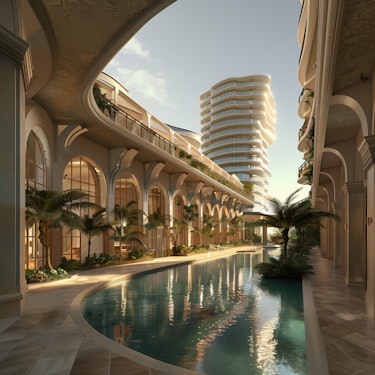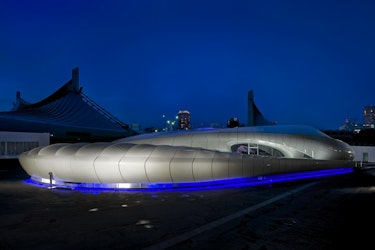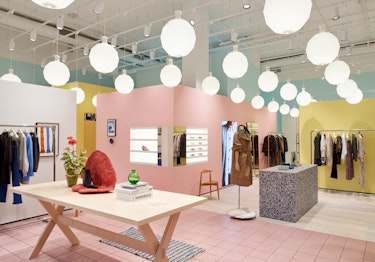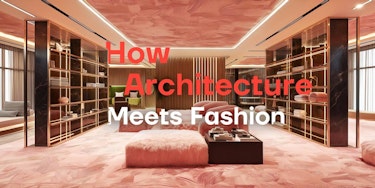Cross-industrial collaboration represents a synergistic alliance between different sectors, aiming to harness their unique strengths for mutual benefit. This concept is especially pivotal in the realms of architecture and fashion — two disciplines that, while seemingly disparate, can converge to produce groundbreaking and aesthetically compelling results. The fusion of architecture with the dynamism of fashion opens avenues for creativity that are boundless and brimming with potential.

One of the most visually striking examples of this collaboration is when fashion designers host their runway shows in breathtaking architectural settings. For instance, Louis Vuitton’s 2020 show at the TWA Flight Center in New York not only showcased their collection but also highlighted the iconic mid-20th-century architecture of Eero Saarinen. The curves and futuristic design of the building mirrored the innovative spirit of the fashion pieces, creating a memorable spectacle.

Credit: Universal History Archive/Uig Via Getty Images
Architectural elements often inspire fashion collections that echo the forms, textures, and principles of buildings. Zaha Hadid, renowned for her fluid architectural designs, collaborated with Chanel on a mobile art pavilion that brought together her distinctive aesthetic with the luxury brand’s chic style.

Credit: Zaha Hadid Architects
Fashion brands also frequently engage architects to create pop-up stores that are temporary, immersive experiences reflecting the ethos of the brand while using innovative architectural solutions. An excellent example is the collaboration between Bjarke Ingels Group and the fashion brand Ganni, which resulted in a series of pop-up shops featuring recyclable materials and modular designs that could be reconfigured as needed, promoting both sustainability and flexibility.

Credit: Courtesy of Ganni
Obviously, collaborations between architecture and fashion can revitalize both industries by injecting new ideas and approaches. Architects can bring a structural, enduring perspective to fashion, influencing designs with their emphasis on form and sustainability. Conversely, fashion can offer architecture a more fluid and transient form of expression, often experimenting with new materials and forms at a faster pace than traditional architecture might allow. This cross-pollination not only drives innovation but also broadens the market reach and appeal for both industries. By embracing these dynamic collaborations, both industries not only enhance their own artistic expressions but also contribute to a broader cultural evolution towards more cohesive and innovative design thinking.
